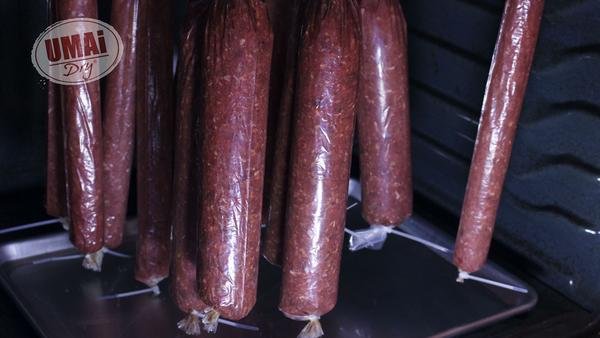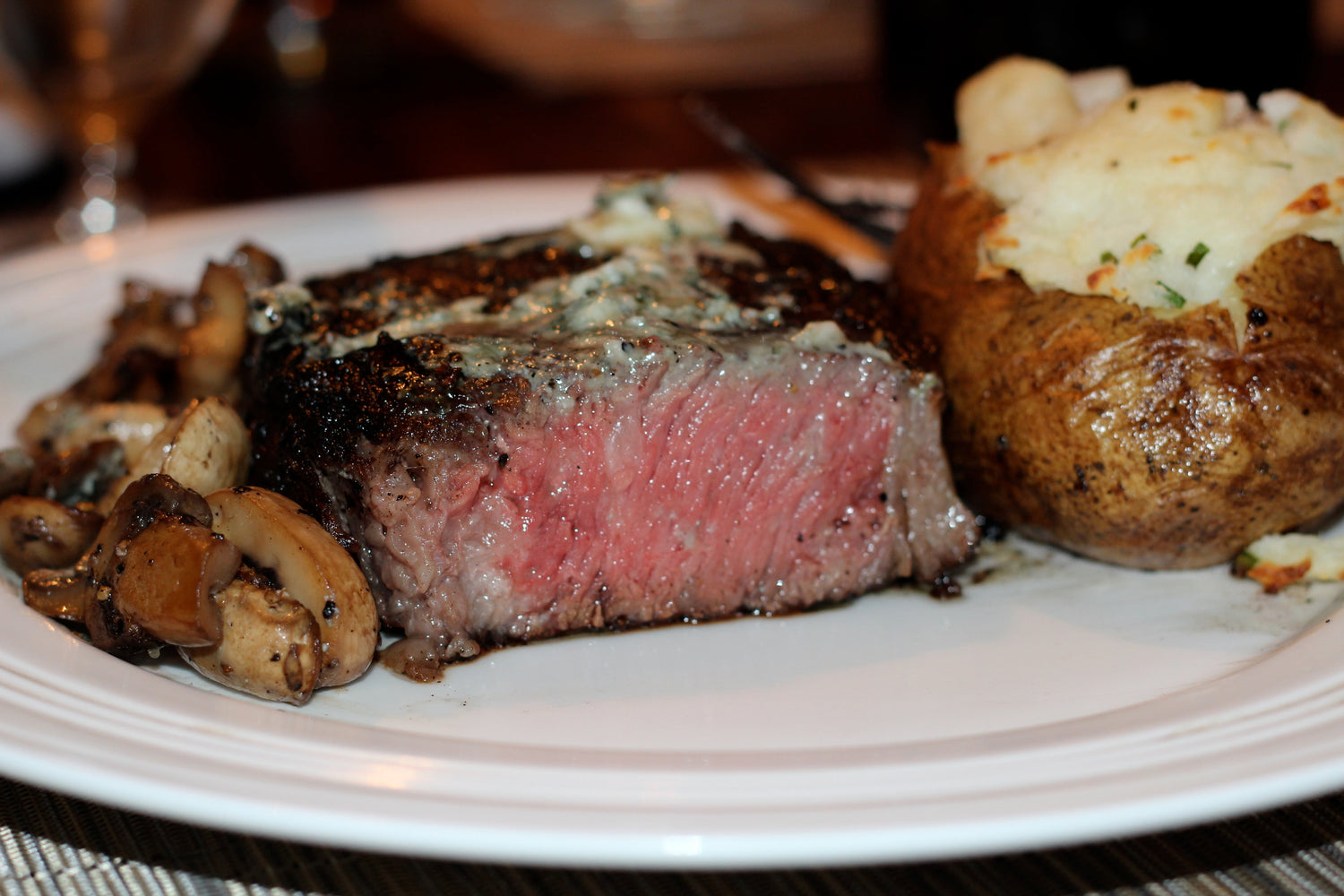Once the air starts to cool and the leaves begin to change, my favorite activity is to take a relaxing hike. Since my backpack is usually filled with that “just in case” sweatshirt, I prefer to bring a smaller protein-packed snack. Landjaeger is perfect since it's a convenient on-the-go size and doesn't need to be refrigerated.
Using the UMAi Salumi kit, I can create this delicious Southern Germany Semidried Sausage at home - no cave required!
Shop Artisan Salumi Crafting Kits >
How to Make Landjaeger Sausage
Rated 3.6 stars by 11 users
Category
Semi-Dry Sausage
Prep Time
0 minutes
Landjaeger means “hunters’ sausage”—smoky, mild, chewy. Usually made in the narrow 32mm size casing, its perfectly portable for brisk autumn hikes, long hunting weekends and chilly nights by the bonfire.
This will show you the whole process of preparing the meat from chilling to grinding to mixing with cure, spices and starter culture. You will see the ease of stuffing into UMAi Dry Salumi casing for fermented, slow dried sausage, fermented at room temperature. The benefit of UMAi Dry Sausage Casing is drying safely in the comfort of your kitchen fridge. This video will show your every step making it easy even for a first time salumi-maker.
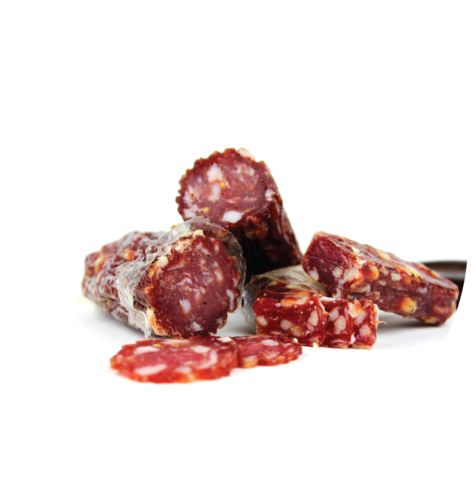
Ingredients
-
UMAi Dry Sausage Kit
Includes 30 ft of UMAi Dry Salumi Casing, Powdered Dextrose, #2 Curing Salt, and Bactoferm T-SPX Starter Culture (for 300 lbs of meat with 18 month expiration date)
Pork Loin 4 lbs (1.8 kg)
Pork Belly 1 lbs (450 g)
-
T-SPX Starter Culture 1/4-1/2 tsp (add more as culture approaches expiration)
-
Powdered Dextrose 1/2 -1 tsp (feed your starter culture generously)
-
UMAi Dry Landjaeger Spice Blend
-
UMAi Dry Premixed Curing Salts Blend for 5 lb Recipe
Essential Basic Ingredients
Directions
Before you start
Prepare 2 tbsp of de-chlorinated water, either distilled, or boiled and cooled.
Remove Bactoferm T-SPX starter culture from the freezer. Measure 1/4 - 1/2 tbsp per 5 lbs of meat and dissolve into water.
Because math is the bane of my existence, I like to keep it simple and purchase the UMAi Dry curing salts blend, which is perfectly measured for 5 lbs worth of meat.
Or you can stretch those brain muscles by using your own salt blend:
Measure 3% kosher or sea salt (meat weight x 0.03).
Measure out 0.25% Instacure #2 (meat weight x 0.0025)and dextrose as per recipe.Mix 1 tsp of dextrose into your Landjaeger spice blend packet and shake well.
Grinding
Begin by cutting 5 lbs of meat into cubes. Distribute cubes into a single layer on a tray to partially freeze. (Make sure the meat does not freeze solid, as it can damage the grinder.)
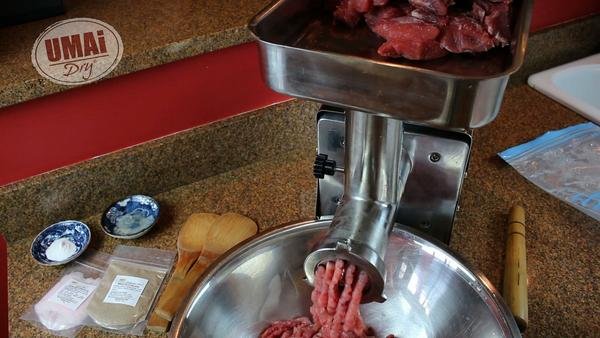
Use a 1/4 - 3/8 / 8 - 10 mm plate for good particle definition. Start by first grinding the crispy cold pork loin, followed by the pork belly. Put your newly ground meat back into the fridge to cool before seasoning.
Seasoning
Add the TSP X starter, use wooden paddles to mix. This allows the meat to keep its definition. Knead until mixture becomes stiff
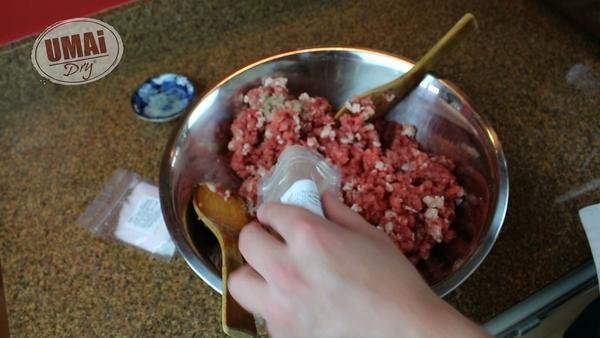
Add the mixed dextrose powder and spice blend to the meat
Be sure to mix in your kosher salt and instacure. Using the paddles, chop and mix in the seasonings, making sure to thoroughly blend.
Stuffing
Now that your meat is properly prepared, it's time to stuff. Before you start, be sure to measure the height of the area where you're going to hang your sausages, and make a guide to ensure you’ll be filling your stuffer to the right length to hang it for fermentation.
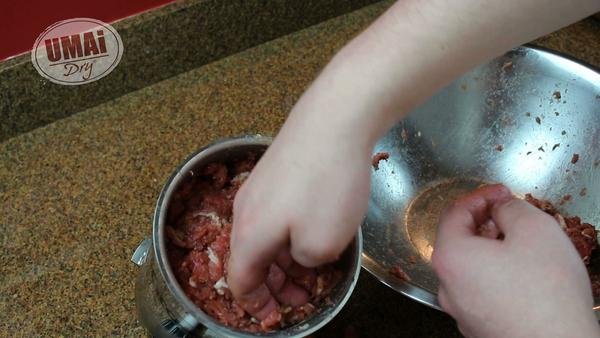
Fill your manual stuffer, tightly packing in the meat to avoid any air bubbles.
Thread your measured UMAi Salumi bag onto the horn of the stuffer, pressing out the air from the bag. Use one of the provided zip ties to secure the end of the bag.
Next, line up the 32 mm casing on the horn of your stuffer and thread on as much casing as will fit tightly on the stuffer. Press out any air, and use one of the zip ties on the very end.
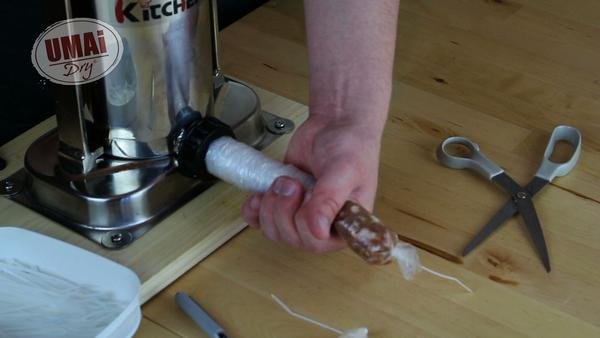
Stuff the bag to the desired length. Once the bag is at the measured length, use two zip ties to secure the end of your first sausage and beginning of your next sausage.I’d suggest stuffing in pairs to allow for easy hanging.
Once all of the sausages are stuffed, pick out a couple of sausages to weigh, and mark the weight on the sausages so you can weigh it later to ensure they have lost the correct amount of weight.
The sausages should start out a grayish color, but over the course of fermentation, they will start turning a bright red. At this point, you should put them in a full-size frost-free refrigerator. Keep an eye on the weight of the target sausages, and once they have lost 35 to 40 percent of moisture (after about 3 to 4 weeks), you will have a delicious homemade dry sausage.
